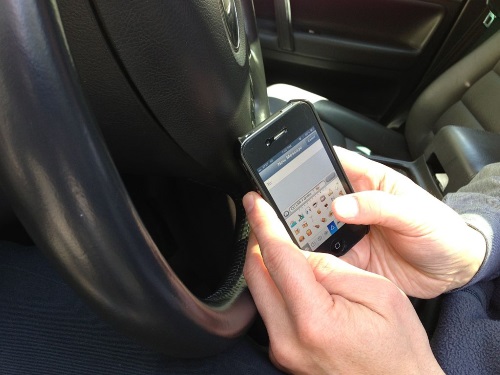A study led by researchers at the Center for Injury Research and Policy at Nationwide Children’s Hospital found that “hands-free” cellphone laws are associated with fewer driver deaths. However, more targeted cellphone laws – such as calling-only and texting-only bans, among others – are not.
[Above image via Wikimedia Commons]
The researchers said that could be due to greater compliance as “hands-free” cellphone laws clearly forbid handling of cellphones at any time while driving. In addition, drivers may be more likely to believe that enforcement is possible when the laws govern cellphone use broadly, the study said.
The study – based on data from the National Highway Traffic Safety Administration’s Fatality Analysis Reporting System, the Insurance Institute for Highway Safety, and LexisNexis – found that “hands-free” laws have prevented about 140 driver deaths and 13,900 driver injuries annually in the United States from 1999 through 2016.
It further noted that as of June 2021 some 21 of 50 states have implemented hands-free cellphone laws – i.e., comprehensive handheld cellphone bans – that prohibit almost all handheld cellphone use, including texting, calling and use of mobile applications. In addition, three states and the District of Columbia banned calling and texting, with 24 states banning just texting behind the wheel. Meanwhile, two states offer no prohibition on cellphone use for drivers of any age.

“We’re not suggesting states take people’s phones away while driving or tell them not to use their phone while driving,” said Dr. Motao “Matt” Zhu, lead author of the study and principal investigator in the Center for Injury Research and Policy, in a statement.
“We’re recommending that, if you need to use your phone while driving, you do so hands-free,” he stressed. “Further, we recommend states implement hands-free cellphone laws to encourage this behavior change. Our research demonstrates that hands-free laws save lives and reduce the societal costs associated with distracted driving.”
Distracted driving is an increasing problem on U.S. roadways, as 3,142 people died in crashes involving a distracted driver in 2019 – the latest year for which data is available – which is up nearly 10 percent from 2018.
The Center for Injury Research and Policy’s study also estimated some of the state-level “societal costs” associated with distracted driving-related crashes. In just Ohio alone, the study found those “societal costs” – including emergency response service, hospital costs, the impact of lost wages and higher insurance expenditures – are about $1.2 billion every year annually.
The Transportation Research Board recently noted in a blog post that jurisdictions with strong traffic safety laws, supported by enforcement, public education, and outreach, tend to have lower overall traffic fatality rates
Meanwhile, state departments of transportation are working on several fronts to reduce distracted driving-related crashes.

For example, in July 2020, the Ohio Department of Transportation and Ohio State Highway Patrol (OSHP) created a 12-mile long distracted driving safety corridor running along U.S. 33 between the Fairfield/Franklin County Line and SR 188.
Since its implementation, OSHP troopers significantly increased enforcement on U.S. 33, which resulted in fewer crashes and fatalities.
From July 2020 through April 2021, the Ohio DOT noted in a statement that distracted driving crashes along that corridor declined by 44 percent while fatalities dropped 61 percent as compared the timeframe between 2019 and 2020.
 Nation
Nation
North Dakota DOT Profiled in State DOT Update
July 3, 2025 Nation
Nation

